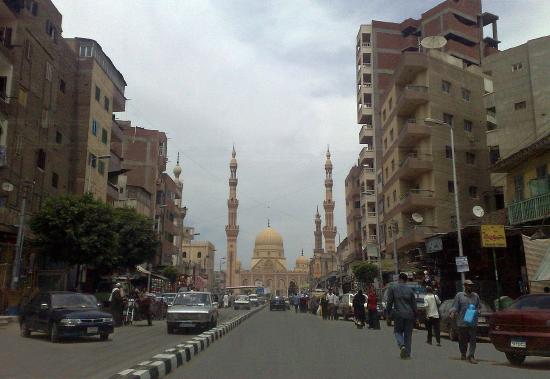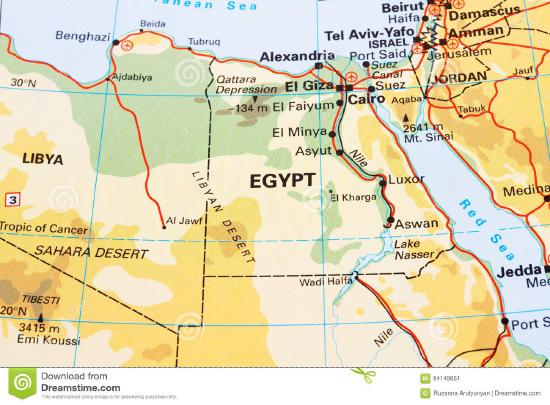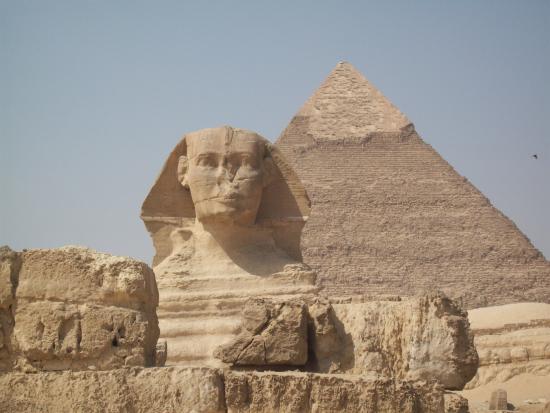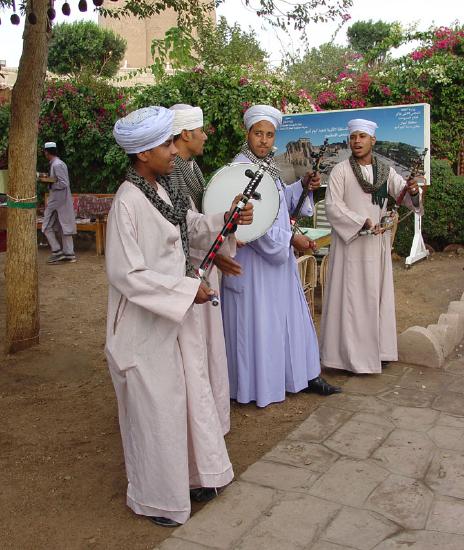7.10: Egypt
- Page ID
- 251260
\( \newcommand{\vecs}[1]{\overset { \scriptstyle \rightharpoonup} {\mathbf{#1}} } \)
\( \newcommand{\vecd}[1]{\overset{-\!-\!\rightharpoonup}{\vphantom{a}\smash {#1}}} \)
\( \newcommand{\dsum}{\displaystyle\sum\limits} \)
\( \newcommand{\dint}{\displaystyle\int\limits} \)
\( \newcommand{\dlim}{\displaystyle\lim\limits} \)
\( \newcommand{\id}{\mathrm{id}}\) \( \newcommand{\Span}{\mathrm{span}}\)
( \newcommand{\kernel}{\mathrm{null}\,}\) \( \newcommand{\range}{\mathrm{range}\,}\)
\( \newcommand{\RealPart}{\mathrm{Re}}\) \( \newcommand{\ImaginaryPart}{\mathrm{Im}}\)
\( \newcommand{\Argument}{\mathrm{Arg}}\) \( \newcommand{\norm}[1]{\| #1 \|}\)
\( \newcommand{\inner}[2]{\langle #1, #2 \rangle}\)
\( \newcommand{\Span}{\mathrm{span}}\)
\( \newcommand{\id}{\mathrm{id}}\)
\( \newcommand{\Span}{\mathrm{span}}\)
\( \newcommand{\kernel}{\mathrm{null}\,}\)
\( \newcommand{\range}{\mathrm{range}\,}\)
\( \newcommand{\RealPart}{\mathrm{Re}}\)
\( \newcommand{\ImaginaryPart}{\mathrm{Im}}\)
\( \newcommand{\Argument}{\mathrm{Arg}}\)
\( \newcommand{\norm}[1]{\| #1 \|}\)
\( \newcommand{\inner}[2]{\langle #1, #2 \rangle}\)
\( \newcommand{\Span}{\mathrm{span}}\) \( \newcommand{\AA}{\unicode[.8,0]{x212B}}\)
\( \newcommand{\vectorA}[1]{\vec{#1}} % arrow\)
\( \newcommand{\vectorAt}[1]{\vec{\text{#1}}} % arrow\)
\( \newcommand{\vectorB}[1]{\overset { \scriptstyle \rightharpoonup} {\mathbf{#1}} } \)
\( \newcommand{\vectorC}[1]{\textbf{#1}} \)
\( \newcommand{\vectorD}[1]{\overrightarrow{#1}} \)
\( \newcommand{\vectorDt}[1]{\overrightarrow{\text{#1}}} \)
\( \newcommand{\vectE}[1]{\overset{-\!-\!\rightharpoonup}{\vphantom{a}\smash{\mathbf {#1}}}} \)
\( \newcommand{\vecs}[1]{\overset { \scriptstyle \rightharpoonup} {\mathbf{#1}} } \)
\( \newcommand{\vecd}[1]{\overset{-\!-\!\rightharpoonup}{\vphantom{a}\smash {#1}}} \)
\(\newcommand{\avec}{\mathbf a}\) \(\newcommand{\bvec}{\mathbf b}\) \(\newcommand{\cvec}{\mathbf c}\) \(\newcommand{\dvec}{\mathbf d}\) \(\newcommand{\dtil}{\widetilde{\mathbf d}}\) \(\newcommand{\evec}{\mathbf e}\) \(\newcommand{\fvec}{\mathbf f}\) \(\newcommand{\nvec}{\mathbf n}\) \(\newcommand{\pvec}{\mathbf p}\) \(\newcommand{\qvec}{\mathbf q}\) \(\newcommand{\svec}{\mathbf s}\) \(\newcommand{\tvec}{\mathbf t}\) \(\newcommand{\uvec}{\mathbf u}\) \(\newcommand{\vvec}{\mathbf v}\) \(\newcommand{\wvec}{\mathbf w}\) \(\newcommand{\xvec}{\mathbf x}\) \(\newcommand{\yvec}{\mathbf y}\) \(\newcommand{\zvec}{\mathbf z}\) \(\newcommand{\rvec}{\mathbf r}\) \(\newcommand{\mvec}{\mathbf m}\) \(\newcommand{\zerovec}{\mathbf 0}\) \(\newcommand{\onevec}{\mathbf 1}\) \(\newcommand{\real}{\mathbb R}\) \(\newcommand{\twovec}[2]{\left[\begin{array}{r}#1 \\ #2 \end{array}\right]}\) \(\newcommand{\ctwovec}[2]{\left[\begin{array}{c}#1 \\ #2 \end{array}\right]}\) \(\newcommand{\threevec}[3]{\left[\begin{array}{r}#1 \\ #2 \\ #3 \end{array}\right]}\) \(\newcommand{\cthreevec}[3]{\left[\begin{array}{c}#1 \\ #2 \\ #3 \end{array}\right]}\) \(\newcommand{\fourvec}[4]{\left[\begin{array}{r}#1 \\ #2 \\ #3 \\ #4 \end{array}\right]}\) \(\newcommand{\cfourvec}[4]{\left[\begin{array}{c}#1 \\ #2 \\ #3 \\ #4 \end{array}\right]}\) \(\newcommand{\fivevec}[5]{\left[\begin{array}{r}#1 \\ #2 \\ #3 \\ #4 \\ #5 \\ \end{array}\right]}\) \(\newcommand{\cfivevec}[5]{\left[\begin{array}{c}#1 \\ #2 \\ #3 \\ #4 \\ #5 \\ \end{array}\right]}\) \(\newcommand{\mattwo}[4]{\left[\begin{array}{rr}#1 \amp #2 \\ #3 \amp #4 \\ \end{array}\right]}\) \(\newcommand{\laspan}[1]{\text{Span}\{#1\}}\) \(\newcommand{\bcal}{\cal B}\) \(\newcommand{\ccal}{\cal C}\) \(\newcommand{\scal}{\cal S}\) \(\newcommand{\wcal}{\cal W}\) \(\newcommand{\ecal}{\cal E}\) \(\newcommand{\coords}[2]{\left\{#1\right\}_{#2}}\) \(\newcommand{\gray}[1]{\color{gray}{#1}}\) \(\newcommand{\lgray}[1]{\color{lightgray}{#1}}\) \(\newcommand{\rank}{\operatorname{rank}}\) \(\newcommand{\row}{\text{Row}}\) \(\newcommand{\col}{\text{Col}}\) \(\renewcommand{\row}{\text{Row}}\) \(\newcommand{\nul}{\text{Nul}}\) \(\newcommand{\var}{\text{Var}}\) \(\newcommand{\corr}{\text{corr}}\) \(\newcommand{\len}[1]{\left|#1\right|}\) \(\newcommand{\bbar}{\overline{\bvec}}\) \(\newcommand{\bhat}{\widehat{\bvec}}\) \(\newcommand{\bperp}{\bvec^\perp}\) \(\newcommand{\xhat}{\widehat{\xvec}}\) \(\newcommand{\vhat}{\widehat{\vvec}}\) \(\newcommand{\uhat}{\widehat{\uvec}}\) \(\newcommand{\what}{\widehat{\wvec}}\) \(\newcommand{\Sighat}{\widehat{\Sigma}}\) \(\newcommand{\lt}{<}\) \(\newcommand{\gt}{>}\) \(\newcommand{\amp}{&}\) \(\definecolor{fillinmathshade}{gray}{0.9}\)In this section, you will be able to:
- Learn about Egypt, its Geographical location, famous cities, its most famous artifacts, and its traditional food and clothes.
Egypt مصر: Misr
Egypt (مِصر) is one of the most historically rich and culturally significant countries in the Arab world. Located in North Africa, Egypt connects Africa to the Middle East and has played a crucial role in world history for thousands of years. The country is well known for its ancient civilization, pyramids, and the Nile River.
Facts to know about Egypt
- Official Name: Arab Republic of Egypt- جمهورية مصر العربية- jumhuriat misr alearabia
- Capital: Cairo- القاهرة- Al Qahirah
- Population: 106,789,274 - (2022)
- Currency: Egyptian Pound- الجنيه المصري- aljunayh almisriu
- Continent: Africa- أفريقيا- afriqya
- Official Lagrange: Modern Standard Arabic -اللغة العربية الفصحى الحديثة- allughat alearabiat alfushaa alhaditha.
-
Tourism is a major part of Egypt’s economy, with millions of visitors coming each year to see its famous historical sites. The country also has industries in agriculture, manufacturing, and trade, with the Suez Canal playing a key role in global shipping.
Geographical location and flag
Egypt is located in the northeast corner of Africa. It is the link between the northeast of Africa and the southwest corner of Asia. It borders with Sudan to the south, Libya to the west, the Red Sea and Gulf of Aqaba to the east, the Mediterranean Sea to the north, and the Gaza Strip to the northeast. Egypt was a cradle of one of the most ancient Middle Eastern civilizations, the Pharaonic ancient Egyptian civilization.
Watch this movie about Ancient Egypt and learn about ancient Egyptian
Famous cities
-
Cairo (القاهرة) – The capital and largest city of Egypt, Cairo is the political, economic, and cultural heart of the country. It is home to numerous historical and modern landmarks, including the Pyramids of Giza, the Sphinx, and the Egyptian Museum, which houses a vast collection of ancient artifacts, including treasures from the tomb of Tutankhamun. Cairo is also famous for its vibrant markets, such as Khan el-Khalili, where visitors can buy traditional crafts, spices, and jewelry. The city has a unique blend of ancient history and modern infrastructure, featuring high-rise buildings, traffic congestion, and a lively arts and music scene. The Nile River runs through Cairo, offering scenic views and traditional felucca boat rides.
-
Alexandria (الإسكندرية) – A major port city on the Mediterranean coast, famous for the ancient Library of Alexandria and the Citadel of Qaitbay.

- Luxor (الأقصر) – Home to some of the most famous ancient Egyptian temples and monuments, including the Valley of the Kings.
-
Aswan (أسوان) – A southern city known for its beautiful scenery, Nubian culture, and the Aswan High Dam.
-
Tanta (طنطا) – A key city in the Nile Delta region, known for its religious significance and the Mosque of Ahmad al-Badawi.

- Asyut (أسيوط) – A major city in Upper Egypt with a deep historical and cultural heritage, playing a central role in trade and education.

- Suez (السويس) – A strategically important port city located on the Suez Canal, connecting the Mediterranean Sea to the Red Sea and serving as a major

- Port Said (بورسعيد) – A significant coastal city at the northern entrance of the Suez Canal, known for its strategic importance in international trade. The city played a crucial role in Egyptian history, particularly during the Suez Crisis of 1956. Port Said is famous for its picturesque Corniche, colonial-style buildings, and duty-free shopping, making it a popular tourist destination.

History and Culture
Egypt has a long and fascinating history that dates back over 5,000 years. It was home to one of the world’s earliest civilizations, the Ancient Egyptians, who built the famous pyramids, temples, and tombs. The country was later influenced by Greek, Roman, Arab, and Ottoman cultures. Today, Egypt is known for its rich blend of ancient traditions and modern life.
Most famous artifacts
The Great Sphinx of Giza
The Great Sphinx of Giza is one of the most famous artifacts in Egypt and one of the largest monuments in the world. It has two parts a lion's body and a human head. It is a huge 4,500-year-old limestone statue measuring 240 feet long and 66 feet high near the Great Pyramid in Giza.

A View of the Great Sphinx of Giza beside a Pyramid; pexels license
The Rosetta Stone
The Rosetta Stone is one of the most ancient artifacts in Egypt. It went back to Pharaoh Ptolemy V. It contains a decree about religious texts written in three different writing systems Greek, Egyptian Hieroglyphics, and Egyptian Demotic. It is the key to undersatnd the ancient writing system of egypt.

Nefertiti Bust
Nefertiti Bust is one of the most famous artifacts of the most beautiful woman in Ancient Egypt. She is the great royal wife of the Egyptian Pharaoh Akhenaton. The bust is made of limestone covered with modeled gypsum.
Egyptian Pyramids
Egyptian Pyramids are Ancient buildings and great structures that are located in Egypt. They were built during the brightest time of the Egyptian civilizations, especially the Great Pyramids of Giza. The oldest pyramids were built around 2630 B.C. at Saqqarah for the king Djoser.
Watch the videos to learn more about Pyramids.
Ramesses II
Ramesses II is known as Ramesses the Great. He was one of the most famous pharaohs of Egypt. He was the third Pharaoh of the Nineteenth Dynasty. He was famous for his bravery, leadership, and martial Skills over the Egyptian army.
Most Popular Food in Egypt
Egyptian cuisine is rich in flavors and influenced by centuries of trade and cultural exchanges. Some of the most popular dishes include:
-
Kushari (كشري) – A beloved street food made from rice, pasta, lentils, chickpeas, and fried onions, all topped with a spicy tomato sauce and garlic vinegar.

- Ful medames (فول مدمس) – A staple breakfast dish made of fava beans, usually cooked slowly and served with olive oil, lemon juice, and garlic.
-
Ta'meya (طعمية) – Egyptian falafel made from fava beans instead of chickpeas, deep-fried and served with bread, salad, and tahini sauce.
-
Molokhia (ملوخية) – A green leafy soup made from jute leaves, cooked with garlic and served with rice or bread, often with chicken or rabbit.

- Feteer meshaltet (فطير مشلتت) – A layered, flaky pastry that can be eaten plain, with honey, or stuffed with cheese or meat.
-
Mahshi (محشي) – Vegetables such as zucchini, eggplant, or grape leaves stuffed with rice, herbs, and spices.
-
Hawawshi (حواوشي) – A spiced minced meat sandwich baked inside a crispy bread crust.
-
Om Ali (أم علي) – A traditional Egyptian dessert similar to bread pudding, made with layers of pastry, milk, nuts, and sugar.

Activity 1
Write the missing words after reading the chapter above
Most Popular Traditional Clothing in Egypt
- Egyptian fashion mostly has simple patterns with high-quality cotton, linen, and wool fabrics mixed with Islamic, Ottoman, and European cultures, traditions, and customs.
- There are differences in the styles of fashion between rich and poor, farmers and city residents, Muslims and non-Muslims.
- Egyptian Men's outfit differs from one place to another. Men mainly wear "Gallegaya" in striped colors with baggy pants and wide and large sleeves. For their headdresses, they put "taqiyia", or "turban" made from cotton.
- Egyptian women's fashion is mainly inspired by Islamic Culture attire. Women wear "Gallebaya" that fully cover their bodies with headdresses, ears, and necks. while some of the women wear European fashion and others wear Islamic clothing with either Hijab or Burka.
-
Nubian Traditional Dress – In southern Egypt, Nubian communities wear colorful, intricately designed garments that reflect their unique cultural heritage.
-
Siwan Clothing – In the Siwa Oasis, local Berber communities wear traditional embroidered dresses and silver jewelry, reflecting their distinct cultural identity.
Watch this video about Ancient Egyptian Fashion
Egyptian Women's Traditional Clothing
Egyptian Men's Traditional Clothing

Activity 2
Query \(\PageIndex{2}\)
Plan a trip to Egypt during summer break. List the cities and historical places you want to visit and the famous dishes you want to eat.


 Learning Objectives
Learning Objectives.svg.png?revision=1&size=bestfit&width=404&height=227)

.jpg?revision=1&size=bestfit&width=261&height=392)
_and_veil_(tarha)_-_Cairo_in_Egypt_-_Collected_in_2002.jpg?revision=1&size=bestfit&width=298&height=397)
.jpg?revision=1&size=bestfit&width=257&height=386)